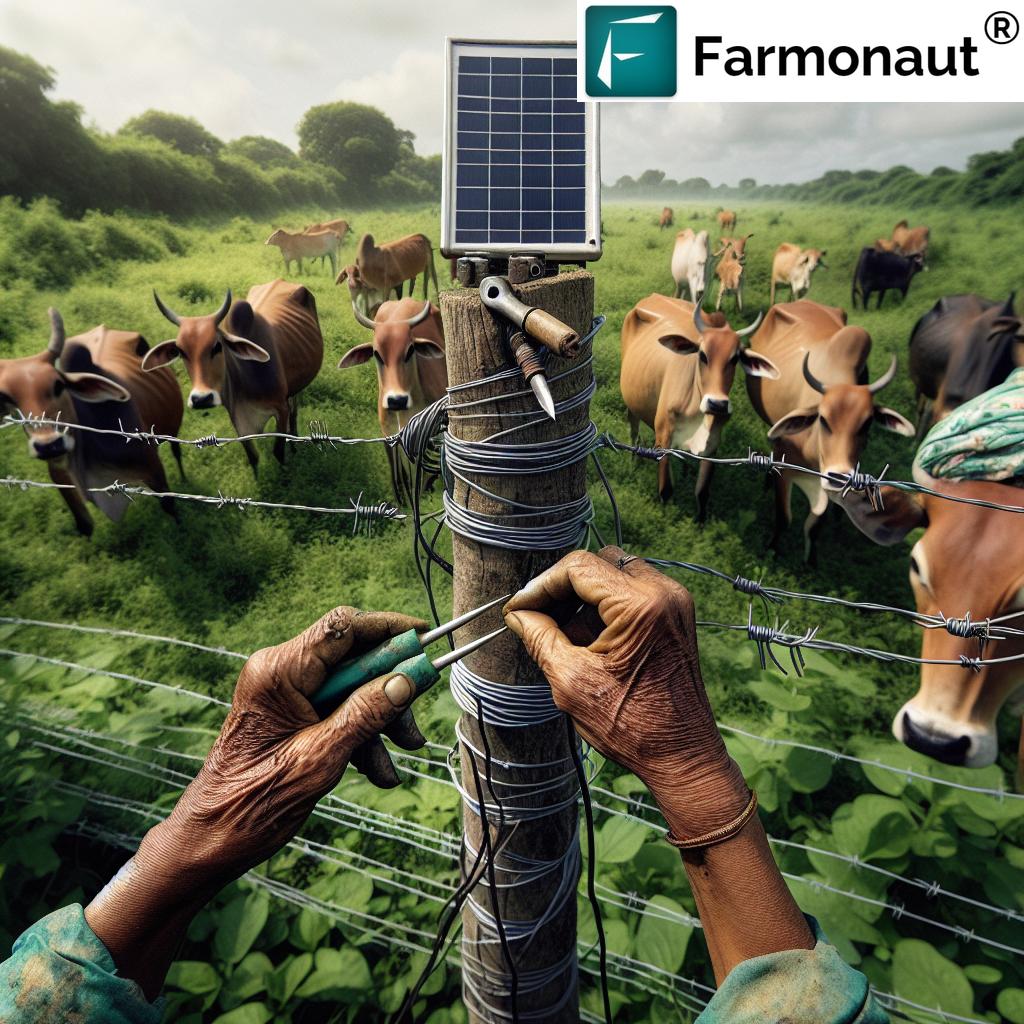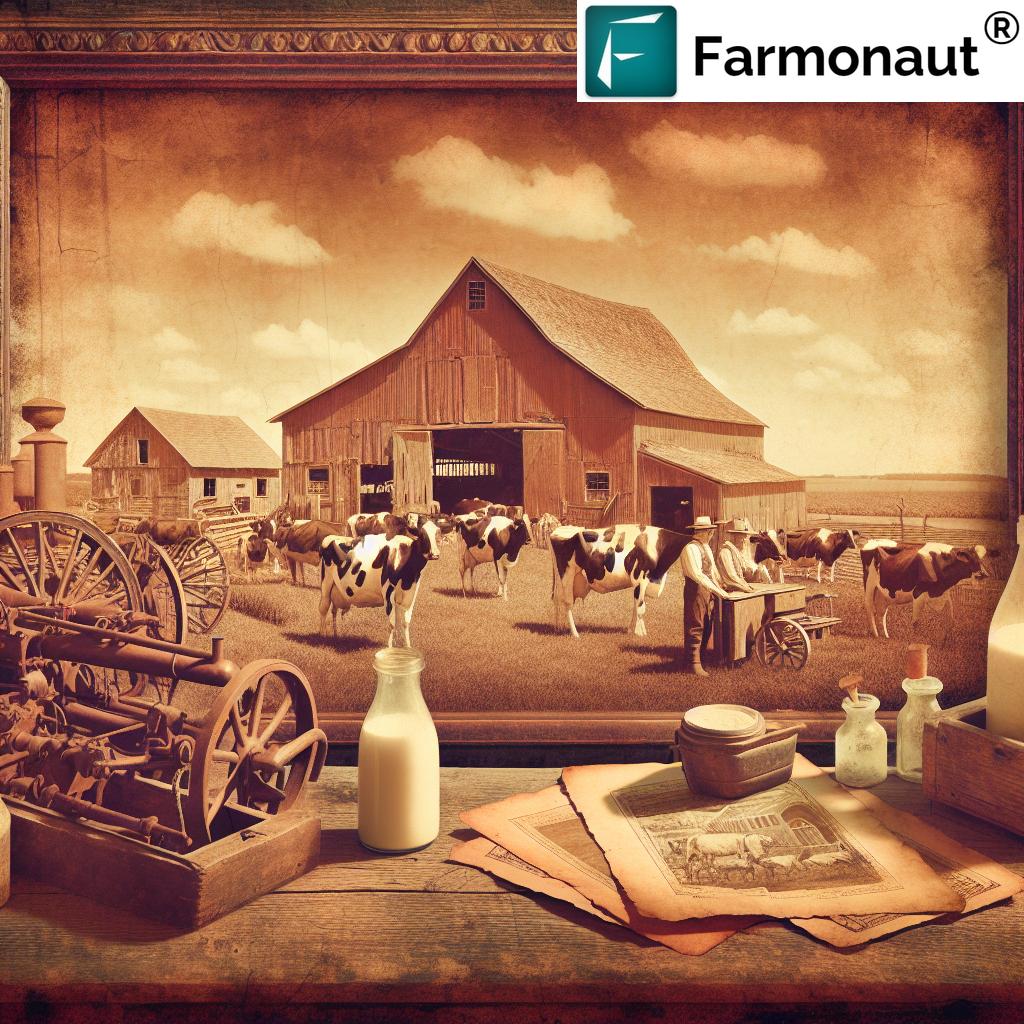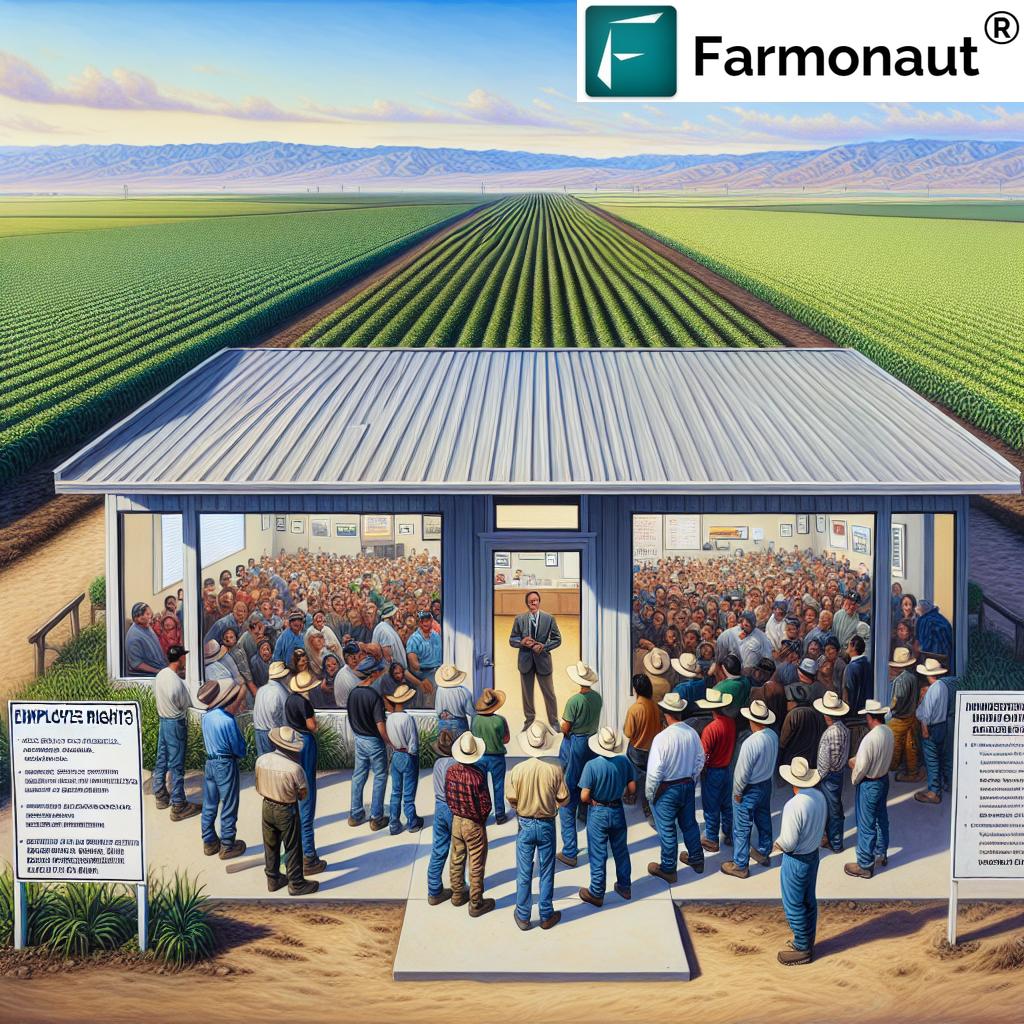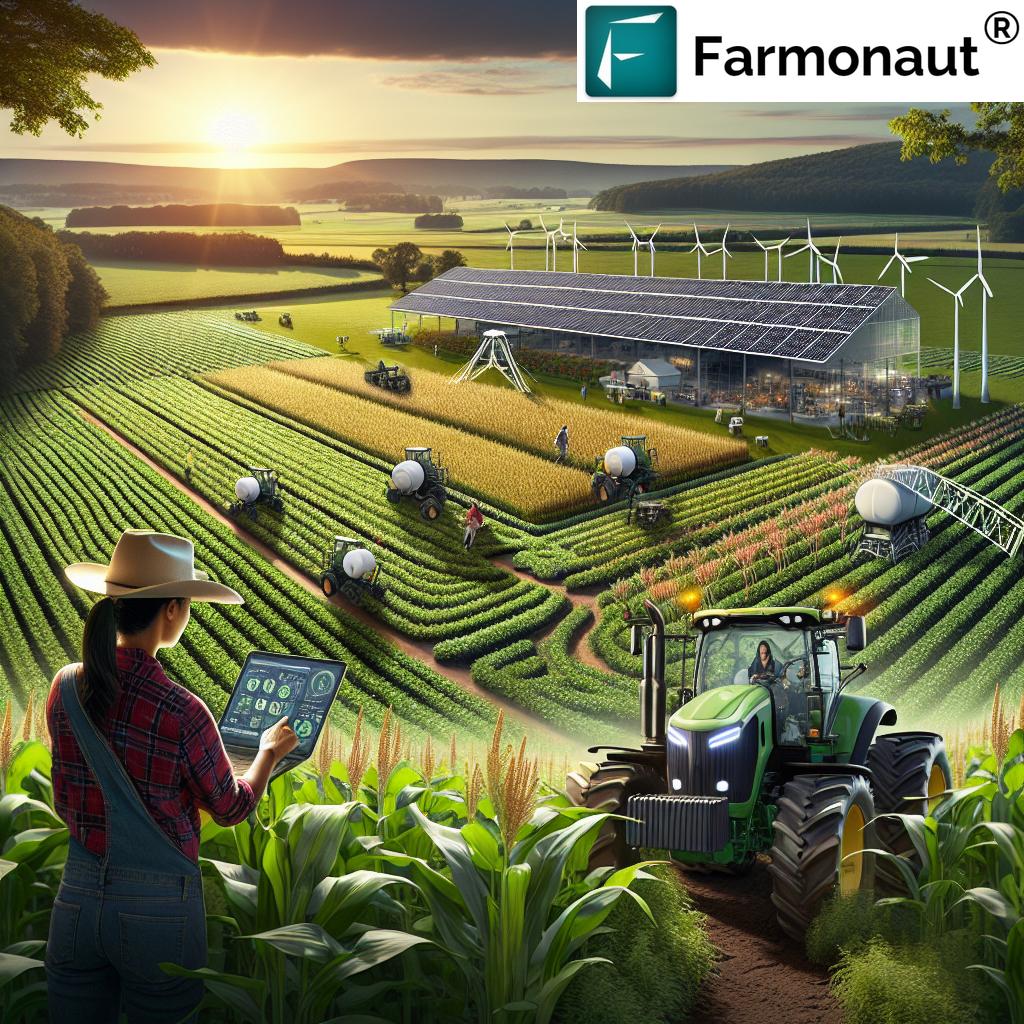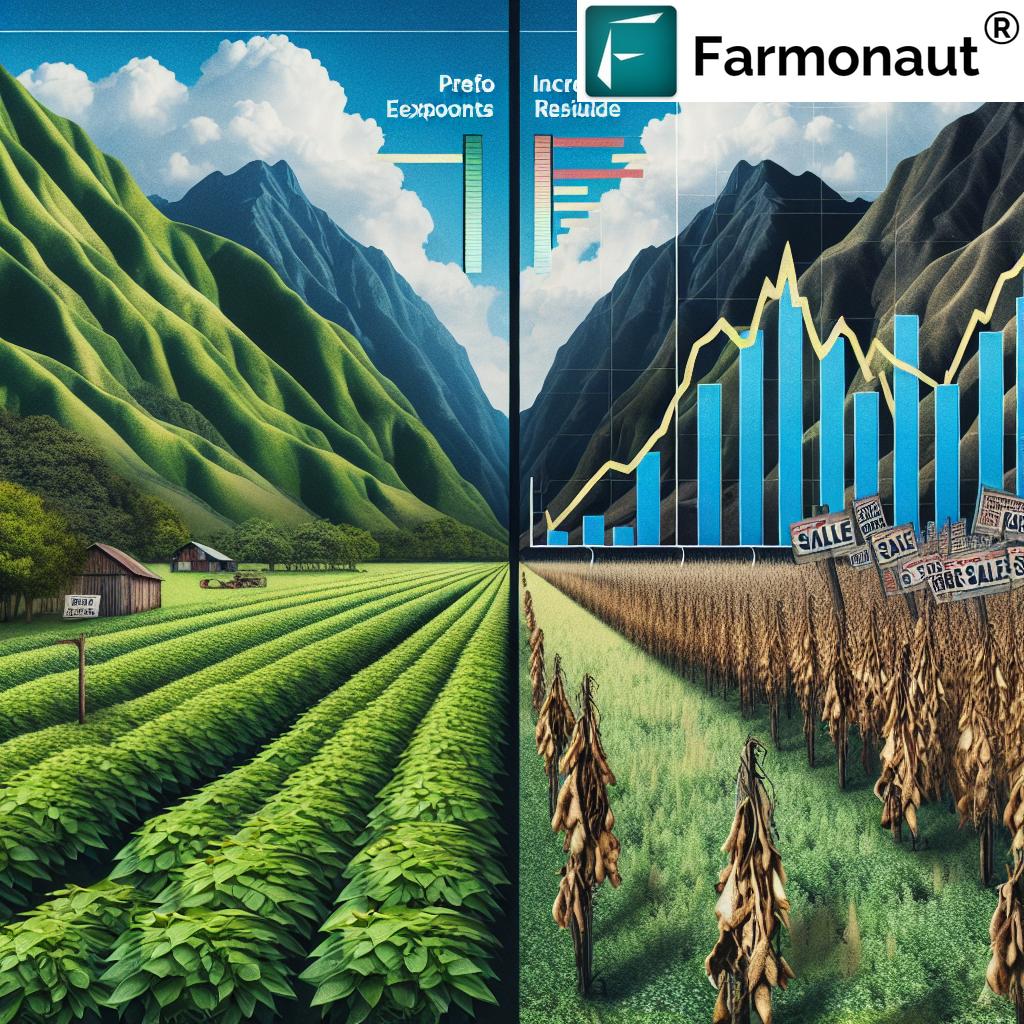Farmonaut’s Guide: Mastering Electric Fence Challenges for Midwest Livestock Management
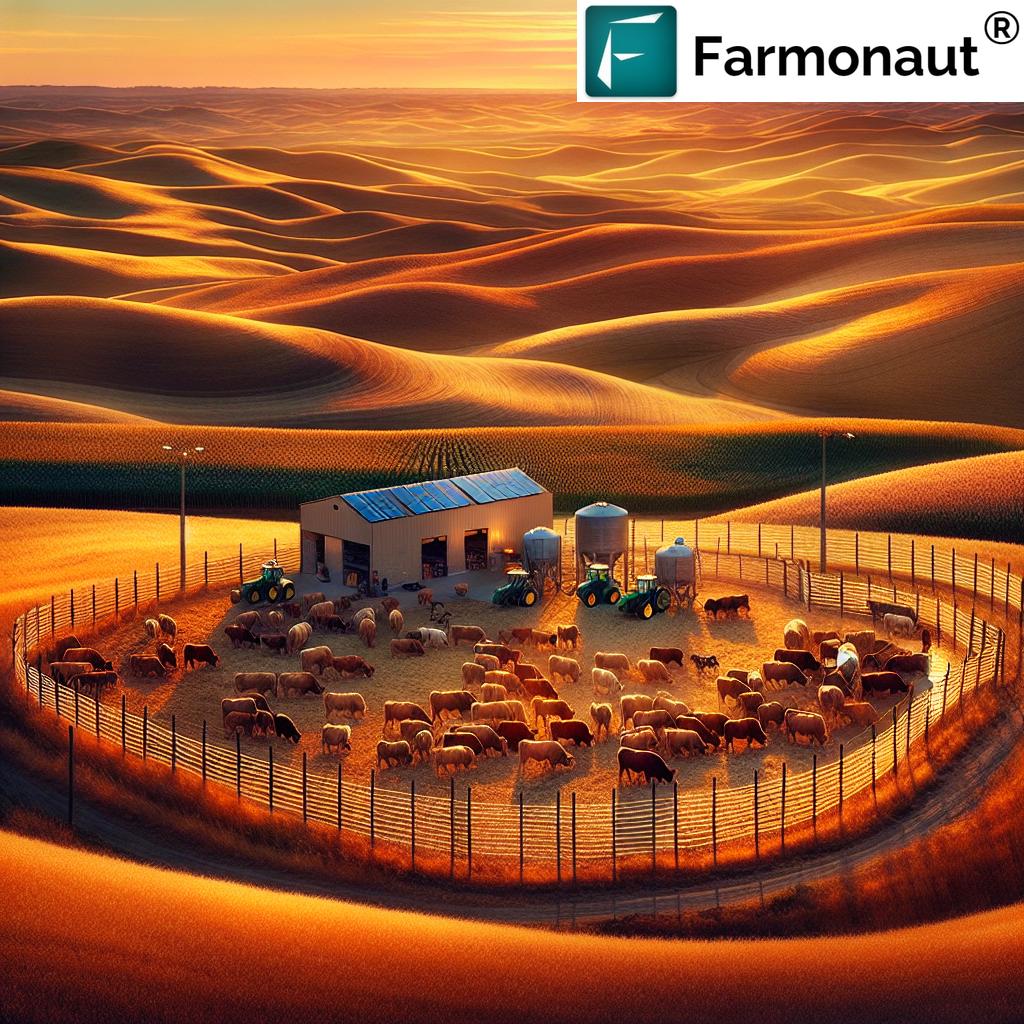
“Over 90% of Midwest livestock farmers face electric fence challenges due to unpredictable weather and wildlife interference.”
Howdy, fellow farmers and ranchers! Welcome to our comprehensive guide on mastering the challenges of electric fences for livestock management in the Midwest. As we all know, life on the prairie isn’t always a walk in the park, especially when it comes to keeping our precious livestock contained. From the unpredictable weather of the Northern states to the persistent wildlife of the Southern region, we’ve got our work cut out for us. But fear not! We’re here to share our experiences, tips, and tricks to help you tackle these agricultural challenges head-on.
In this blog post, we’ll explore the ups and downs of modern farming technology, focusing on electric fence for cattle and other livestock. We’ll dive into the world of solar fencers for farms, discuss cattle containment solutions, and share some invaluable fence repair techniques. So grab your work gloves and let’s get started on this journey through the heart of Midwest farm life!
The Electric Fence: A Midwest Farmer’s Best Friend and Worst Nightmare
Let’s face it, folks – electric fences are the unsung heroes of our ranches and farms. They’re like the hardworking, no-nonsense citizens of our agricultural republic, tirelessly keeping our livestock in check. But just like any good citizen, they sometimes face their own set of challenges. Here’s what we’re up against in the Midwest:
- Weather Woes: From scorching summers to bone-chilling winters, our electric fences brave it all.
- Wildlife Warriors: Deer, elk, and even the occasional bear seem to think our fences are part of an obstacle course.
- Equipment Quirks: Solar fencers and other modern gadgets can be as temperamental as a stubborn mule.
But don’t worry, we’ve got solutions for all these challenges and more. Let’s break it down, shall we?
Weather-Proofing Your Electric Fence: A Midwest Must
Here in the Midwest, we’ve got a saying: “If you don’t like the weather, wait five minutes.” While that might be an exaggeration, it’s not far from the truth. Our electric fences need to stand up to everything from sweltering heat to bone-chilling cold, not to mention the occasional tornado or blizzard. Here’s how we keep our fences fighting fit:
- Insulation is Key: Use high-quality insulators to prevent power loss during wet conditions.
- Ground Rod Greatness: Install multiple ground rods to improve fence performance, especially in dry or frozen soil.
- Lightning Protection: Invest in lightning diverters to protect your energizer from sudden surges.
Remember, a well-maintained fence is a happy fence. Regular checks and maintenance can save you a world of trouble down the line.
Wildlife Woes: When Nature Decides to Test Your Fence
Living in the Midwest means sharing our space with a diverse array of wildlife. While we love our furry and feathered neighbors, they can wreak havoc on our electric fences. Here’s how we deal with these four-legged fence testers:
- Visibility Matters: Use brightly colored tape or flags to make fences more visible to animals.
- Height Adjustments: Adjust fence height based on local wildlife – higher for deer, lower for smaller critters.
- Baiting Alternatives: Consider setting up salt licks or feed stations away from fence lines to divert wildlife.
By implementing these strategies, we can coexist peacefully with our wild neighbors while keeping our livestock safe and sound.
Solar Fencers: Harnessing the Power of the Prairie Sun
In the vast expanses of the Midwest, traditional power sources aren’t always readily available. That’s where solar fencers come in handy. These nifty devices harness the power of the sun to keep our electric fences charged and ready. But like any piece of farm equipment, they come with their own set of challenges:
- Positioning is Paramount: Ensure your solar panel faces south and is tilted at the correct angle for maximum sun exposure.
- Battery Basics: Invest in high-quality, deep-cycle batteries for reliable performance.
- Weather Watch: Keep solar panels clean and free from snow or debris to maintain efficiency.
With proper setup and maintenance, solar fencers can be a game-changer for remote pastures and large ranches.
“Solar-powered electric fencers can reduce farm energy costs by up to 75% compared to traditional electric systems.”
Fence Repair Techniques: Quick Fixes for Common Issues
Even the best-maintained fences will need repairs from time to time. Here are some quick fixes for common electric fence issues:
- Loose Connections: Tighten all connections and replace any corroded parts.
- Vegetation Management: Regularly clear vegetation from fence lines to prevent power leakage.
- Wire Tension: Use tensioners to keep wires taut and prevent sagging.
Remember, a stitch in time saves nine – or in our case, a quick repair saves a whole lot of escaped livestock!
Modern Farming Technology: Bringing the Digital Age to the Pasture
As we navigate the challenges of electric fence maintenance, it’s worth noting how modern farming technology is revolutionizing the way we manage our livestock. Companies like Farmonaut are at the forefront of this agricultural revolution, offering innovative solutions that complement our traditional farming practices.
Farmonaut’s satellite-based farm management solutions provide real-time insights into our farm operations, including:
- Crop health monitoring
- Soil moisture analysis
- Weather forecasting
- Resource management tools
While these technologies might not directly fix a broken fence, they can help us optimize our overall farm management, freeing up time and resources for crucial tasks like fence maintenance.
Check out Farmonaut’s offerings:
The Daily Grind: Life on a Midwest Farm
Now, let’s take a moment to appreciate the daily life of a Midwest farmer or rancher. Our days start early, often before the sun peeks over the horizon. We’re up checking fences, feeding livestock, and planning our day before most folks have had their first cup of coffee. It’s a life that requires dedication, perseverance, and a good sense of humor.
Here’s a typical day in the life of a Midwest livestock farmer:
- 5:00 AM – Rise and shine, time to check the fences
- 6:00 AM – Feed the livestock
- 7:00 AM – Quick breakfast (if we’re lucky)
- 8:00 AM – Start on daily farm tasks (planting, harvesting, equipment maintenance)
- 12:00 PM – Lunch break (often a working lunch)
- 1:00 PM – Continue farm tasks
- 4:00 PM – Evening livestock check and feeding
- 6:00 PM – Dinner with family
- 7:00 PM – Paperwork and planning for the next day
- 9:00 PM – Hit the hay (pun intended)
Of course, this schedule can be thrown off by any number of factors – a broken fence, a sick animal, or unpredictable weather. That’s why adaptability is key in farm life.
Sustainable Farming Practices: Balancing Tradition and Innovation
As stewards of the land, we Midwest farmers are always looking for ways to make our operations more sustainable. Electric fences play a crucial role in this, allowing us to implement rotational grazing systems that improve pasture health and reduce overgrazing. Here are some sustainable practices we’re implementing:
- Rotational Grazing: Using portable electric fences to move livestock frequently, allowing pastures to recover.
- Solar Power: Harnessing the sun’s energy for our fencing needs reduces our carbon footprint.
- Native Plant Buffers: Planting native species along fence lines to support local ecosystems and pollinators.
By combining these practices with modern technologies like those offered by Farmonaut, we’re working towards a more sustainable and productive future for Midwest agriculture.
The Community Spirit: Midwest Farmers Stick Together
One of the best things about being a farmer or rancher in the Midwest is the sense of community. When one of us is facing a challenge – be it a broken fence, a sick animal, or a looming deadline – we can always count on our neighbors for support. This spirit of cooperation is what makes our agricultural community so resilient.
Here are some ways we support each other:
- Equipment Sharing: Pooling resources for expensive machinery
- Knowledge Exchange: Sharing tips and tricks at local farmer’s markets or co-op meetings
- Emergency Response: Helping out when disaster strikes, like during severe weather events
This sense of community extends to our adoption of new technologies as well. When one farmer finds success with a new tool or technique, word spreads quickly, benefiting the entire community.
Looking to the Future: The Evolution of Midwest Farming
As we continue to face challenges in our daily farm life, it’s important to keep an eye on the future. The agricultural landscape is constantly evolving, and staying ahead of the curve is crucial for success. Here are some trends we’re watching:
- Precision Agriculture: Using data and technology to make more informed decisions
- Climate-Resilient Farming: Adapting our practices to cope with changing weather patterns
- Diversification: Exploring new crops and livestock to spread risk and increase profitability
Companies like Farmonaut are at the forefront of this agricultural evolution, providing tools that help us navigate these changes. Their satellite-based crop monitoring and AI-powered advisory systems are just a taste of what’s to come in the world of modern farming.
Embracing Technology: Farmonaut’s Role in Modern Midwest Farming
While our focus has been on electric fences and livestock management, it’s worth taking a moment to explore how companies like Farmonaut are revolutionizing other aspects of farming in the Midwest and beyond. Farmonaut’s suite of tools offers solutions that complement our traditional farming practices:
- Satellite-Based Crop Monitoring: Get real-time insights into crop health, helping you make informed decisions about irrigation and pest management.
- AI-Powered Advisory System: Receive personalized recommendations based on your specific farm conditions and crop types.
- Weather Forecasting: Access accurate, localized weather predictions to plan your farm activities more effectively.
- Resource Management: Optimize your use of water, fertilizers, and other inputs to improve efficiency and reduce costs.
While these tools may not directly solve our electric fence challenges, they can significantly improve our overall farm management, freeing up time and resources to tackle issues like fence maintenance more effectively.
For those interested in exploring Farmonaut’s offerings further, you can check out their API or dive into their API Developer Docs for more technical information.
Putting It All Together: A Holistic Approach to Midwest Farming
As we wrap up our journey through the world of electric fences and modern farming technology, let’s take a moment to reflect on the big picture. Successful Midwest farming isn’t just about maintaining good fences or adopting the latest tech – it’s about finding the right balance between tradition and innovation.
Here’s a summary of key points to remember:
- Regular maintenance is crucial for electric fence performance
- Adapt your fencing strategies to local wildlife and weather conditions
- Embrace sustainable practices like rotational grazing
- Leverage modern technologies to improve overall farm management
- Stay connected with your farming community for support and knowledge sharing
- Keep an eye on future trends and be ready to adapt
By combining these elements, we can create resilient, productive, and sustainable farms that will continue to thrive for generations to come.
| Challenge | Impact on Farm | Farmonaut’s Solution |
|---|---|---|
| Lightning strikes | Damaged equipment, potential livestock escape | Real-time weather alerts, predictive maintenance scheduling |
| Large animals breaking fences | Costly repairs, livestock mixing or loss | AI-powered wildlife detection, fence integrity monitoring |
| Solar fencer failures | Unreliable fence power, increased maintenance time | Remote equipment monitoring, performance optimization recommendations |
| Vegetation overgrowth | Reduced fence effectiveness, increased power loss | Vegetation health mapping, targeted maintenance alerts |
| Soil moisture fluctuations | Poor grounding, inconsistent fence performance | Soil moisture analysis, adaptive power management suggestions |
FAQs: Your Burning Questions Answered
Q: How often should I check my electric fence?
A: We recommend doing a quick visual inspection daily and a more thorough check at least once a week. After severe weather events, always perform an additional check.
Q: Can Farmonaut’s technology help with electric fence management?
A: While Farmonaut doesn’t directly manage electric fences, its farm management tools can help you optimize your overall operations, potentially freeing up time for better fence maintenance.
Q: What’s the best way to protect my electric fence from lightning?
A: Install lightning diverters, use proper grounding techniques, and consider disconnecting the energizer during severe thunderstorms.
Q: How can I make my electric fence more visible to wildlife?
A: Use brightly colored tape or flags along the fence line. Some farmers also hang aluminum cans or other reflective objects to increase visibility.
Q: Are solar fencers reliable in the Midwest winter?
A: With proper setup and maintenance, solar fencers can be reliable year-round. Ensure the solar panel is kept clear of snow and positioned for maximum sun exposure.
Conclusion: Fencing Our Way to a Brighter Future
As we close the gate on this comprehensive guide to electric fence challenges in Midwest livestock management, we hope you’ve gained some valuable insights and practical tips. Remember, every challenge we face is an opportunity to learn, grow, and improve our farming practices.
From weather-proofing our fences to embracing cutting-edge technologies like those offered by Farmonaut, we’re constantly evolving and adapting. It’s this resilience and innovation that makes Midwest farmers and ranchers some of the best in the world.
So the next time you’re out there fixing a fence in the pouring rain or battling a stubborn solar fencer, remember that you’re part of a proud tradition of Midwest agriculture. Keep your chin up, your fence hot, and your sense of humor intact. After all, that’s the Midwest way!
Happy farming, folks!
